(C) 2010 Hank Wallace & Chad Barbour
Do an Internet search for “Tone Capacitor” and you will find the most amazing mish-mash of fact, half-fact, lies and opinions. This type of capacitor is better than that one. This dielectric is brittle, and that one sounds smooth. This cap is better for rock and that one better for country. This one is more Fender-ish, and that one more boutique. Another hypefest just begging to be busted!
That’s what we love: Busting hypefests! So let’s get to it. (Also see the video summary below.)
Briefly, a capacitor (in the context of musical electronics) consists of two plates of conducting metal separated by an insulating layer (called a dielectric). For example, if you took two rolls of aluminum foil and unrolled them, sandwiching a layer of paper between, that would make a capacitor. To make it more space efficient, you would roll the whole thing up again. If you connected a wire to each roll of foil, you would find that the two insulated conductors have some interesting properties.
One of those properties is that a capacitor increases or reduces high frequency audio energy, depending on how it is connected inside a guitar or amplifier. Now you won’t be able to fit your handmade capacitor inside your guitar, but there are mass produced capacitors that fit nicely, and change the tone of your instrument by rolling off the high frequencies, in conjunction with the guitar’s tone pot.
A capacitor has a value called the capacitance, measured in Farads (after a long dead European scientist), but the Farad turns out to be a HUGE unit of measure. Engineers typically measure capacitance in units a million times smaller, called microfarads.
A common value for a tone capacitor in guitars is 0.022 microfarads, or 0.022uF as an abbreviation. A larger value that rolls off high frequencies to a greater degree is 0.1uF. There are many values used in the wide range of guitars on the market, but the tests here focus on these two values. The principles learned apply to other values as well.
Then how do we bust this hypefest? We do that by attaching tone capacitors of the same measured value to the same instrument, in turn, and measuring the frequency response of the pickups. For a guitarist that’s a difficult task as the only measurement tool he has is his ear, and that tool is biased by all the other stuff running around in his brain, good and bad.
Fortunately, we have a tool that we created specifically for measuring the frequency responses of guitar pickups, and it has no such biases. Using that tool, we can measure the responses, plot them, and even create sound clips so that we can actually hear the effects of various tone capacitors.
We first purchased a load of capacitors of various types, all new. These represent a wide range of capacitor types used in guitars and referenced in the online hypefest. This was not cheap, but truth is sometimes costly!
We also scrounged our personal inventories of surplus parts for capacitors of the two values we were testing. One associate who is an electronics junkie from way back (just ask his wife) found a couple of the coveted and ridiculously expensive Sprague Vitamin Q paper in oil capacitors, so we grabbed those for testing as well.
We performed two tests:
- We selected a number of capacitors of nearly the same value but with different dielectrics, then tested and recorded the frequency response of a real pickup with each capacitor connected in turn. This showed us the effect of the dielectric type and construction on the behavior of the capacitor.
- We selected a number of capacitors of the same marked value, but with actual values that vary, to see what the range of frequency response variations is when the user simply assumes that the marked value is the actual value.
We used a Fender Stratocaster with a single coil bridge position pickup to perform these tests. We selected a single coil pickup because the lower interwinding capacitance and inductance of the pickup allows tone capacitor value variations to affect the frequency response to a greater degree, making it easier to understand and view the changes. We disconnected the tone pot and capacitor inside the guitar before performing these tests, to avoid those as tone determining factors.
We measured 90 capacitors to find ones close and far apart in value, of many different types. We tested 26 of those in the instrument.
The tabulated results appear below. Click the pictures to see a larger capacitor image. The sound clips were created as on our pickup test page, by filtering a stock sound clip using the curves you see below. This is MUCH more accurate for comparisons than strumming a guitar due to the variations in playing and player digestion.
| Manufacturer | Description / Part Number | Technology | Tolerance (%) | Rating (V) | Marked Value (uF) | Actual Value (uF) | Error (%) | Out of Tolerance | Plotted | Picture | Sound Clip |
|---|---|---|---|---|---|---|---|---|---|---|---|
| Astron | TQF-1-1-20 | Paper in Oil | Unknown | 100 | 0.1000 | 0.0996 | -0.4 | View Plot | 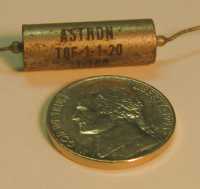 |
Play | |
| BC Components | 344 21223 | Metallized Polycarbonate Film | 10 | 400 | 0.0220 | 0.0237 | 7.7 |  |
|||
| BC Components | 344 21223 | Metallized Polycarbonate Film | 10 | 400 | 0.0220 | 0.0239 | 8.6 | View Plot |  |
Play | |
| BC Components | 344 21223 | Metallized Polycarbonate Film | 10 | 400 | 0.0220 | 0.0237 | 7.7 |  |
|||
| BC Components | 344 21223 | Metallized Polycarbonate Film | 10 | 400 | 0.0220 | 0.0233 | 5.9 |  |
|||
| BC Components | 344 21223 | Metallized Polycarbonate Film | 10 | 400 | 0.0220 | 0.0232 | 5.5 |  |
|||
| BC Components | 344 21223 | Metallized Polycarbonate Film | 10 | 400 | 0.0220 | 0.0235 | 6.8 |  |
|||
| BC Components | 344 21223 | Metallized Polycarbonate Film | 10 | 400 | 0.0220 | 0.0228 | 3.6 |  |
|||
| BC Components | 344 21223 | Metallized Polycarbonate Film | 10 | 400 | 0.0220 | 0.0226 | 2.7 | View Plot |  |
Play | |
| BC Components | 344 21223 | Metallized Polycarbonate Film | 10 | 400 | 0.0220 | 0.0239 | 8.6 |  |
|||
| BC Components | 344 21223 | Metallized Polycarbonate Film | 10 | 400 | 0.0220 | 0.0233 | 5.9 |  |
|||
| BC Components | 344 21223 | Metallized Polycarbonate Film | 10 | 400 | 0.0220 | 0.0233 | 5.9 |  |
|||
| Epcos | Monolithic Ceramic X7R | Monolithic Ceramic | 10 | 100 | 0.0220 | 0.0204 | -7.3 | View Plot | 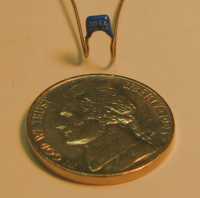 |
Play | |
| Epcos | Monolithic Ceramic X7R | Monolithic Ceramic | 10 | 100 | 0.0220 | 0.0209 | -5.0 |  |
|||
| Epcos | Monolithic Ceramic X7R | Monolithic Ceramic | 10 | 100 | 0.0220 | 0.0217 | -1.4 |  |
|||
| Epcos | Metal Polypropylene – B32612A0223J008 | Metallized Polypropylene Film | 5 | 1000 | 0.0220 | 0.0216 | -1.8 | 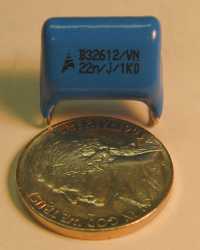 |
|||
| Epcos | Metal Polypropylene – B32612A0223J008 | Metallized Polypropylene Film | 5 | 1000 | 0.0220 | 0.0219 | -0.5 | View Plot |  |
Play | |
| Epcos | Metal Polypropylene – B32612A0223J008 | Metallized Polypropylene Film | 5 | 1000 | 0.0220 | 0.0222 | 0.9 |  |
|||
| Epcos | Metal Polypropylene – B32612A0223J008 | Metallized Polypropylene Film | 5 | 1000 | 0.0220 | 0.0215 | -2.3 |  |
|||
| Epcos | Metal Polypropylene – B32612A0223J008 | Metallized Polypropylene Film | 5 | 1000 | 0.0220 | 0.0221 | 0.5 |  |
|||
| Mallory | 150223J250BB | Polyester Film | 5 | 250 | 0.0220 | 0.0217 | -1.4 | 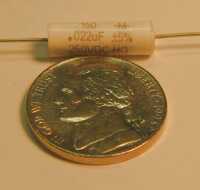 |
|||
| Mallory | 150223J250BB | Polyester Film | 5 | 250 | 0.0220 | 0.0219 | -0.5 | View Plot |  |
Play | |
| Mallory | 150223J250BB | Polyester Film | 5 | 250 | 0.0220 | 0.0216 | -1.8 |  |
|||
| Mallory | 150223J250BB | Polyester Film | 5 | 250 | 0.0220 | 0.0220 | 0.0 |  |
|||
| Mallory | 150223J250BB | Polyester Film | 5 | 250 | 0.0220 | 0.0221 | 0.5 |  |
|||
| Mepco / Electra | Radial | Unknown | Unknown | 50 | 0.0220 | 0.0223 | 1.4 | View Plot | 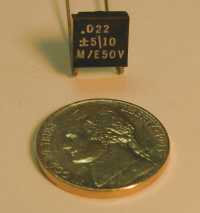 |
Play | |
| Mepco / Electra | Radial | Unknown | Unknown | 50 | 0.0220 | 0.0219 | -0.5 | View Plot |  |
Play | |
| Mepco / Electra | Radial | Unknown | Unknown | 50 | 0.0220 | 0.0218 | -0.9 | View Plot |  |
Play | |
| Panasonic | Poly B Series – ECQ-B1H223JF | Polyester Film | 5 | 50 | 0.0220 | 0.0230 | 4.5 |  |
|||
| Panasonic | Poly B Series – ECQ-B1H223JF | Polyester Film | 5 | 50 | 0.0220 | 0.0222 | 0.9 | View Plot |  |
Play | |
| Panasonic | Poly B Series – ECQ-B1H223JF | Polyester Film | 5 | 50 | 0.0220 | 0.0228 | 3.6 |  |
|||
| Panasonic | Poly B Series – ECQ-B1H223JF | Polyester Film | 5 | 50 | 0.0220 | 0.0222 | 0.9 |  |
|||
| Panasonic | Poly B Series – ECQ-B1H223JF | Polyester Film | 5 | 50 | 0.0220 | 0.0229 | 4.1 |  |
|||
| Panasonic | Stacked Metal Film – ECQ-V1H223JL | Stacked Metallized Plastic Film | 5 | 50 | 0.0220 | 0.0215 | -2.3 | 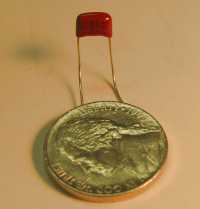 |
|||
| Panasonic | Stacked Metal Film – ECQ-V1H223JL | Stacked Metallized Plastic Film | 5 | 50 | 0.0220 | 0.0219 | -0.5 | View Plot |  |
Play | |
| Panasonic | Stacked Metal Film – ECQ-V1H223JL | Stacked Metallized Plastic Film | 5 | 50 | 0.0220 | 0.0219 | -0.5 |  |
|||
| Panasonic | Stacked Metal Film – ECQ-V1H223JL | Stacked Metallized Plastic Film | 5 | 50 | 0.0220 | 0.0222 | 0.9 | View Plot |  |
Play | |
| Panasonic | Stacked Metal Film – ECQ-V1H223JL | Stacked Metallized Plastic Film | 5 | 50 | 0.0220 | 0.0218 | -0.9 |  |
|||
| Panasonic | Polypropylene – ECQ-P1H223FZW | Polypropylene Film | 1 | 50 | 0.0220 | 0.0220 | 0.0 | 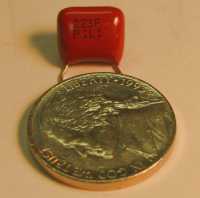 |
|||
| Panasonic | Polypropylene – ECQ-P1H223FZW | Polypropylene Film | 1 | 50 | 0.0220 | 0.0221 | 0.5 |  |
|||
| Panasonic | Polypropylene – ECQ-P1H223FZW | Polypropylene Film | 1 | 50 | 0.0220 | 0.0221 | 0.5 |  |
|||
| Panasonic | Polypropylene – ECQ-P1H223FZW | Polypropylene Film | 1 | 50 | 0.0220 | 0.0221 | 0.5 |  |
|||
| Panasonic | Polypropylene – ECQ-P1H223FZW | Polypropylene Film | 1 | 50 | 0.0220 | 0.0219 | -0.5 | View Plot |  |
Play | |
| Panasonic | PPS Film ECH-S | Polyphenylene Sulphide Film | 5 | 50 | 0.0220 | 0.0214 | -2.7 | 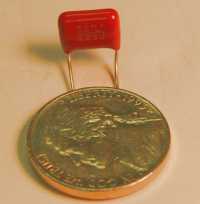 |
|||
| Panasonic | PPS Film ECH-S | Polyphenylene Sulphide Film | 5 | 50 | 0.0220 | 0.0221 | 0.5 |  |
|||
| Panasonic | PPS Film ECH-S | Polyphenylene Sulphide Film | 5 | 50 | 0.0220 | 0.0217 | -1.4 |  |
|||
| Panasonic | PPS Film ECH-S | Polyphenylene Sulphide Film | 5 | 50 | 0.0220 | 0.0211 | -4.1 |  |
|||
| Panasonic | PPS Film ECH-S | Polyphenylene Sulphide Film | 5 | 50 | 0.0220 | 0.0218 | -0.9 | View Plot |  |
Play | |
| Sprague | Vitamin Q 191P10402S4 | Paper in Oil | Unknown | 200 | 0.1000 | 0.1062 | 6.2 | View Plot | 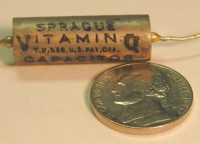 |
Play | |
| Sprague | Vitamin Q 191P10402S4 | Paper in Oil | Unknown | 200 | 0.1000 | 0.0979 | -2.1 |  |
|||
| Sprague | 118P10402S3 | Paper in Wax | Unknown | 200 | 0.1000 | 0.0860 | -14.0 | View Plot | 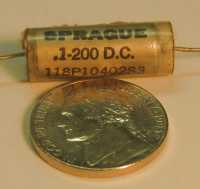 |
Play | |
| Unknown | PCLS4-104 | Unknown | Unknown | 400 | 0.1000 | 0.1008 | 0.8 | 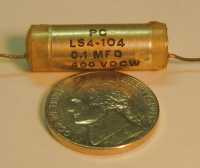 |
|||
| Unknown | PCLS4-104 | Unknown | Unknown | 400 | 0.1000 | 0.1060 | 6.0 | View Plot |  |
Play | |
| Unknown | PCLS4-104 | Unknown | Unknown | 400 | 0.1000 | 0.1031 | 3.1 |  |
|||
| Unknown | PCLS4-104 | Unknown | Unknown | 400 | 0.1000 | 0.1019 | 1.9 |  |
|||
| Unknown | PCLS4-104 | Unknown | Unknown | 400 | 0.1000 | 0.1066 | 6.6 |  |
|||
| Unknown | PCLS4-104 | Unknown | Unknown | 400 | 0.1000 | 0.1037 | 3.7 |  |
|||
| Unknown | PCLS4-104 | Unknown | Unknown | 400 | 0.1000 | 0.1027 | 2.7 |  |
|||
| Unknown | PCLS4-104 | Unknown | Unknown | 400 | 0.1000 | 0.1071 | 7.1 |  |
|||
| Unknown | PCLS4-104 | Unknown | Unknown | 400 | 0.1000 | 0.1060 | 6.0 |  |
|||
| Unknown | PCLS4-104 | Unknown | Unknown | 400 | 0.1000 | 0.1013 | 1.3 |  |
|||
| Unknown | PCLS4-104 | Unknown | Unknown | 400 | 0.1000 | 0.0997 | -0.3 | View Plot |  |
Play | |
| Unknown | PCLS4-104 | Unknown | Unknown | 400 | 0.1000 | 0.1017 | 1.7 |  |
|||
| Unknown | PCLS4-104 | Unknown | Unknown | 400 | 0.1000 | 0.1031 | 3.1 |  |
|||
| Unknown | PCLS4-104 | Unknown | Unknown | 400 | 0.1000 | 0.1014 | 1.4 |  |
|||
| Unknown | Radial Ceramic Disc X5T | Ceramic | Unknown | 25 | 0.0220 | 0.0195 | -11.4 | 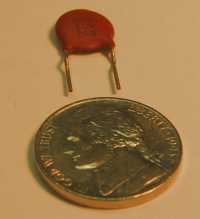 |
|||
| Unknown | Radial Ceramic Disc Z5U | Ceramic | Unknown | 50 | 0.0220 | 0.0186 | -15.5 | View Plot |  |
Play | |
| Unknown | Type CTO Axial | Unknown | 10 | 1600 | 0.0220 | 0.0248 | 12.7 | yes | View Plot | 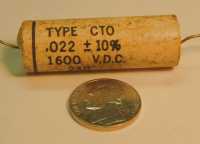 |
Play |
| Unknown | Type CTO Axial | Unknown | 10 | 1600 | 0.0220 | 0.0267 | 21.4 | yes |  |
||
| Unknown | Radial Ceramic Disc X5T | Ceramic | Unknown | 25 | 0.0220 | 0.0194 | -11.8 |  |
|||
| Vishay | MKT1813322254 | Polyester Film | 5 | 250 | 0.0220 | 0.0226 | 2.7 | View Plot | 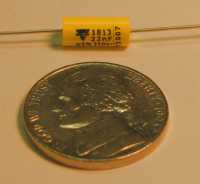 |
Play | |
| Vishay | MKT1813322254 | Polyester Film | 5 | 250 | 0.0220 | 0.0220 | 0.0 |  |
|||
| Vishay | MKT1813322254 | Polyester Film | 5 | 250 | 0.0220 | 0.0224 | 1.8 |  |
|||
| Vishay | MKT1813322254 | Polyester Film | 5 | 250 | 0.0220 | 0.0219 | -0.5 | View Plot |  |
Play | |
| Vishay | MKT1813322254 | Polyester Film | 5 | 250 | 0.0220 | 0.0218 | -0.9 | View Plot |  |
Play | |
| Vishay | 225P22391WD3 Orange Drop | Polyester Film | 10 | 100 | 0.0220 | 0.0206 | -6.4 | 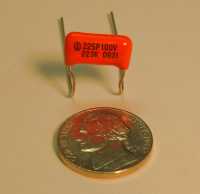 |
|||
| Vishay | 225P22391WD3 Orange Drop | Polyester Film | 10 | 100 | 0.0220 | 0.0204 | -7.3 | View Plot |  |
Play | |
| Vishay | 225P22391WD3 Orange Drop | Polyester Film | 10 | 100 | 0.0220 | 0.0208 | -5.5 |  |
|||
| Vishay | 225P22391WD3 Orange Drop | Polyester Film | 10 | 100 | 0.0220 | 0.0208 | -5.5 |  |
|||
| Vishay | 225P22391WD3 Orange Drop | Polyester Film | 10 | 100 | 0.0220 | 0.0207 | -5.9 |  |
|||
| Vishay | 715P223516MD3 Orange Drop | Polypropylene Film | 5 | 1600 | 0.0220 | 0.0222 | 0.9 | 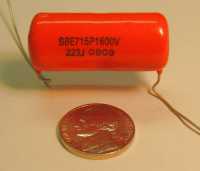 |
|||
| Vishay | 715P223516MD3 Orange Drop | Polypropylene Film | 5 | 1600 | 0.0220 | 0.0223 | 1.4 |  |
|||
| Vishay | 715P223516MD3 Orange Drop | Polypropylene Film | 5 | 1600 | 0.0220 | 0.0222 | 0.9 |  |
|||
| Vishay | 715P223516MD3 Orange Drop | Polypropylene Film | 5 | 1600 | 0.0220 | 0.0221 | 0.5 |  |
|||
| Vishay | 715P223516MD3 Orange Drop | Polypropylene Film | 5 | 1600 | 0.0220 | 0.0223 | 1.4 | View Plot |  |
Play | |
| Vishay | Ceramic X7R – MonoCap | Ceramic | 10 | 50 | 0.0220 | 0.0219 | -0.5 | View Plot | 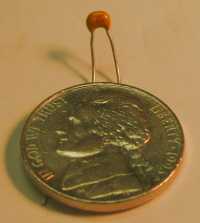 |
Play | |
| Vishay | Ceramic X7R – MonoCap | Ceramic | 10 | 50 | 0.0220 | 0.0215 | -2.3 |  |
|||
| Vishay | Ceramic X7R – MonoCap | Ceramic | 10 | 50 | 0.0220 | 0.0216 | -1.8 |  |
|||
| Vishay | Ceramic X7R – MonoCap | Ceramic | 10 | 50 | 0.0220 | 0.0220 | 0.0 |  |
|||
| Vishay | Ceramic X7R – MonoCap | Ceramic | 10 | 50 | 0.0220 | 0.0220 | 0.0 |  |
(You may have to zoom the graphs to read the legends as there are multiple curves on each graph. The actual value of each capacitor is shown in microfarads on the legend for each curve.)
Analysis and Conclusions
The data and sound clips above show clearly that for tone capacitors of close measured capacitance value there is no difference in tone. For example, compare the clips and plots for the “Monolithic X7R 0.022uF – 0.0204” and the “Vishay 225P Orange Drop 0.022uF – 0.0204”. (You can click on the colored box in the legend and the line will be highlighed briefly.) These two capacitors, of the same measured value (0.0204uF) but different dielectrics have indistinguishable plot lines, differing in frequency at the 0dB crossing by about 0.3%. This difference is below the rated accuracy of our measurement equipment and is statistically insignificant.
The capacitor values in the 0.022uF graph vary from the 0.022uF nominal value -15.5% to +12.7%. (The obvious outlier, the ceramic disc, was a junk drawer special from a Radio Shack grab bag.) The range of frequencies where the curves cross 0dB headed down on the right is about 728Hz (-11%) to 906Hz (+11%), using linear interpolation. The actual dependency is nonlinear, but we used linear interpolation as an approximation to compute these percentages. Going further and plotting a frequency vs. capacitance curve in a spreadsheet and fitting a quadratic polynomial, the correlation coefficient is better than 0.97.
We found only moderate statistical corrleation between the voltage rating of a capacitor and the frequency response (0.45). However, the correlation between the value and voltage rating of all 90 capacitors was 0.40, explaining the former correlation and eliminating voltage rating as a tone determining factor.
It appears that the variation in frequency response is due to the values of the capacitors and not any other factor. From the sound clips, you will notice that you can hear NO difference between the capacitors, except for the most extreme tolerance variations.
There is no advantage to using large, high voltage capacitors. The smaller, lower voltage units work as well.
This dependency on capacitance value alone is EXACTLY what any trained electrical engineer would expect. EE’s select capacitors based on several properties, including the tolerance and dielectric type. For example, some radio circuits require tight tolerance capacitors, 5% or even 1%. Many radio circuits require capacitors that do not vary much over temperature, and capacitors with “NP0” or “COG” dielectrics fit that requirement. Ceramic capacitors are in the main microphonic, but polyester caps are not. Polycarbonate capacitors are stable for use in audio oscillators. Ceramic capacitors have low resistive leakage and are stable over time. There are many factors, but in a guitar application, just about any modern capacitor works well.
To be totally anal, we should present a detailed statistical analysis of the data. But that’s not very useful since facts (statistical or otherwise) generally don’t have an impact on hypefests anyway. The curves and sound clips tell the story very well.
However, there are a thousand YouTube videos that show well meaning guitarists soldering various tone capacitors into their guitars and raving about the tone. They rave about the improved tone related to factors like the type of dielectric in a capacitor, where this is clearly not true. What’s up?
Here’s what could be happening:
- The guitarists are simply falling prey to a musical community hypefest.
- The guitarists want to believe that a certain capacitor has a better sound, so they believe it.
- The capacitors they are testing have different values due to wide component tolerances. Every capacitor has a tolerance as manufactured, typically +/-10% or +/-5%. Older capacitors can drift greatly with time. We tested one capacitor (not in the table) whose value drifted continuously during measurement. It had a different sound, because it was DEFECTIVE. When you see a video or read an article regarding tone capacitors, if the capacitors being compared are not being verified and measured using a capacitance meter, then the entire exercise is a waste of time. Each capacitor, especially the old ones, must be verified to be within tolerance or tone comparisons are useless.
- There is resistive leakage occurring within the capacitors. This has the effect of sounding like a resistor has been added in parallel with the capacitor. Pickup responses are sensitive to such resistances, and older capacitors can skew response measurements and sounds if they are leaky. We found that only one capacitor of the old ones we tested was leaky. We discarded it as defective. This leads us to the NOS (new old stock) phenomenon. The operative word in this phrase is OLD. Would you buy new old stock food? No? Why? BECAUSE IT IS OLD. If you buy NOS capacitors that have been sitting in a box since 1950, don’t expect them to be in tolerance or have low leakage. The designers of the capacitors did not expect them to be used 60 years after the manufacturing date! If you want to get the sound of a 60 year old capacitor that should have been trashed 50 years ago, just buy a $0.50 modern capacitor and place a one-cent one-megohm resistor in parallel with it. There you go. I just saved you $39.49.
To answer critics who would say, “But you tested the capacitors with no tone pot in the circuit, man. When I turn the tone pot down to 5, man, that’s where I hear the difference. Man.” If there’s no difference between capacitors A and B with no tone pot, there will be no difference with the tone pot connected, at any setting. Man.
What about the super expensive silver plated capacitors? Are they better? One would think that if such parts were great in audio amplifiers, the would also be great in cell phones, radar systems and stealth bombers. But they are not used anywhere but in the boutique audiophile and guitar markets. That is, electrical engineers are not susceptible to marketing hype and forum phlegm! We have a related article on gold plated connectors and oxygen free copper that you should read, What About Gold Connectors and Oxygen Free Copper?
Our conclusion is that two tone capacitors with the same measured capacitance value and low leakage yield the same tone, regardless of rated voltage, size, dielectric, or price!
Hypefest busted! Have a nice day.
What about Capacitors in Amplifiers?
An astute reader has asked about the effect of various types of capacitors in tube amplifiers. Good question.
The same conclusion above applies. As long as the capacitor is rated for the proper voltage, two capacitors of the same measured value will sound the same. Proper installation must of course be observed for polarized (electrolytic) capacitors.
There are some other factors that bear mention. By far the leakiest capacitors in a tube amplifier are the electrolytic power supply filter caps. These drop in value and get leakier with age, and their internal resistance increases. If you are building an amplifier as a copy of an amp whose sound you love, the condition of the filter capacitors is important. Old, drooping value, leaky capacitors make for a poorly regulated power supply, and that will definitely affect the tone, especially the response to transient, fast signals. The brand new capacitors in the copy of the amplifier will make the amplifier sound different in subtle ways.
Now I would consider the older capacitors defective, but you might like the sound they produce. You could get that sound by selecting the value properly. A lower capacitance value will produce a different tone, but will also produce more hum from the amplifier.
Another factor to consider in amplifier design is the microphonic nature of each part. Some capacitors (notably, ceramic) pick up sound like a small microphone. This can be a huge problem if your amp is mounted in the same air space as the speakers it drives. This creates a direct feedback path from the speaker into the amplifier circuit, so when you turn the amplifier up, you hear a squeal.
You can tell if a capacitor is microphonic by tapping on it with a plastic implement while the amplifier is running, and listening to the speaker for corresponding sounds. (Please observe all safety precautions when doing this. We will not take responsibility for your electrocution.)
If you are copying an amplifier, it would be best to actually measure the value of each component in the circuit. As I noted in the article, What’s with the Tube Hype? some components in old tube amps can be expected to drift 50% or more with age. To get the same tone, you have to use the same component values, which may be totally out of spec for the tubes and supply voltages you are using. You should analyze the circuit to ensure safe operation at all times, under all operating conditions.
You might be a stickler for using original parts in your amplifier, and that’s fine if you want something that looks like the real thing from the 1970’s. However, you are going to pay more for the parts and you might sacrifice longevity. Why use carbon composition resistors when today’s standard is carbon or metal film? I have replaced a lot of out-of-value carbon comp resistors in amplifiers over the years, and you will, too! Why seek out old paper in oil capacitors when a good mylar unit will work as well and last forever? It’s your choice.
Electrical engineers do select components based on their construction, but mostly based on their value, tolerance, temperature characteristics, and price (all related to construction). And when you are tweaking component values in search of that killer tone, know that it is the measured value of the component that affects the tone to the greatest degree, and not other factors.
Disclaimer: I’m assuming here that you know what you are doing in selecting components for use in high voltage tube amplifiers. If you select a capacitor that is under rated for the voltage in the circuit (plus allowance for signal peaks, and AC line variations and spikes), you are in for some dangerous gigging. A capacitor generally reacts to an overvoltage condition by exploding, so you have to know what you are doing. Have a proper electrical engineer review your work before you flip on the power switch. Always obey good design practice. We are not responsible for your design errors or injuries you cause.
Patent This
Now that the heavy lifting is over, let’s have some fun. Similar to the idea in our article about gold connectors and oxygen free copper, imagine if you could dynamically change the dielectric in a capacitor! Take a look at this baby:
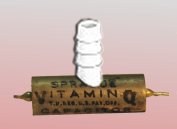
Just think of it. Connect an aquarium pump to a hydraulic foot switch, and have several tubes running to various dielectric solutions backstage. Want a more organic musical sound? Pump in some all natural mineral oil. Playing a synth heavy dance tune from the 1980’s? Open the synthetic motor oil valve for that plastic sound. And for the Birkenstock and sprouts crowd, you would of course have a tank of happy sunflower oil in reserve.
There you go (again). The variable dielectric capacitor. Race you to the patent office?
P.S.
To head off another subsidiary hypefest that pops up periodically, some say that tone capacitors are directional. That is, they have two wires and the two different ways of connecting them results in tonal differences. Now some capacitors are directional. The term is polarized. For example, the electrolytic capacitors used in the power supply of your tube amp are polarized. Connect one of those backwards and you will have a mess on your hands.
But for tone caps of the type we tested, there are no polarity issues. The capacitors function and sound the same whichever way they are connected. Any experience to the contrary exposes a defective capacitor.
What about the ‘outside foil’ consideration? When a capacitor is wound of foil, naturally one side of the metal sandwich is on the outside of the finished part. It has been noted that this outside foil can pick up noise and change the sound of a capacitor. This is simply and indication that the rest of your circuit is poorly shielded! Inside the metal chassis of a tube amplifier, this factor is immaterial, since the chassis provides shielding. In a guitar, this might be a problem. However, I have shielded the cavities of all my instruments with copper foil, haven’t you?
Here we see that a ‘capacitor tone factor’ is actually a leftover of poor design on the part of instrument manufacturers. Buy some foil tape at Home Depot and fix that instrument!
